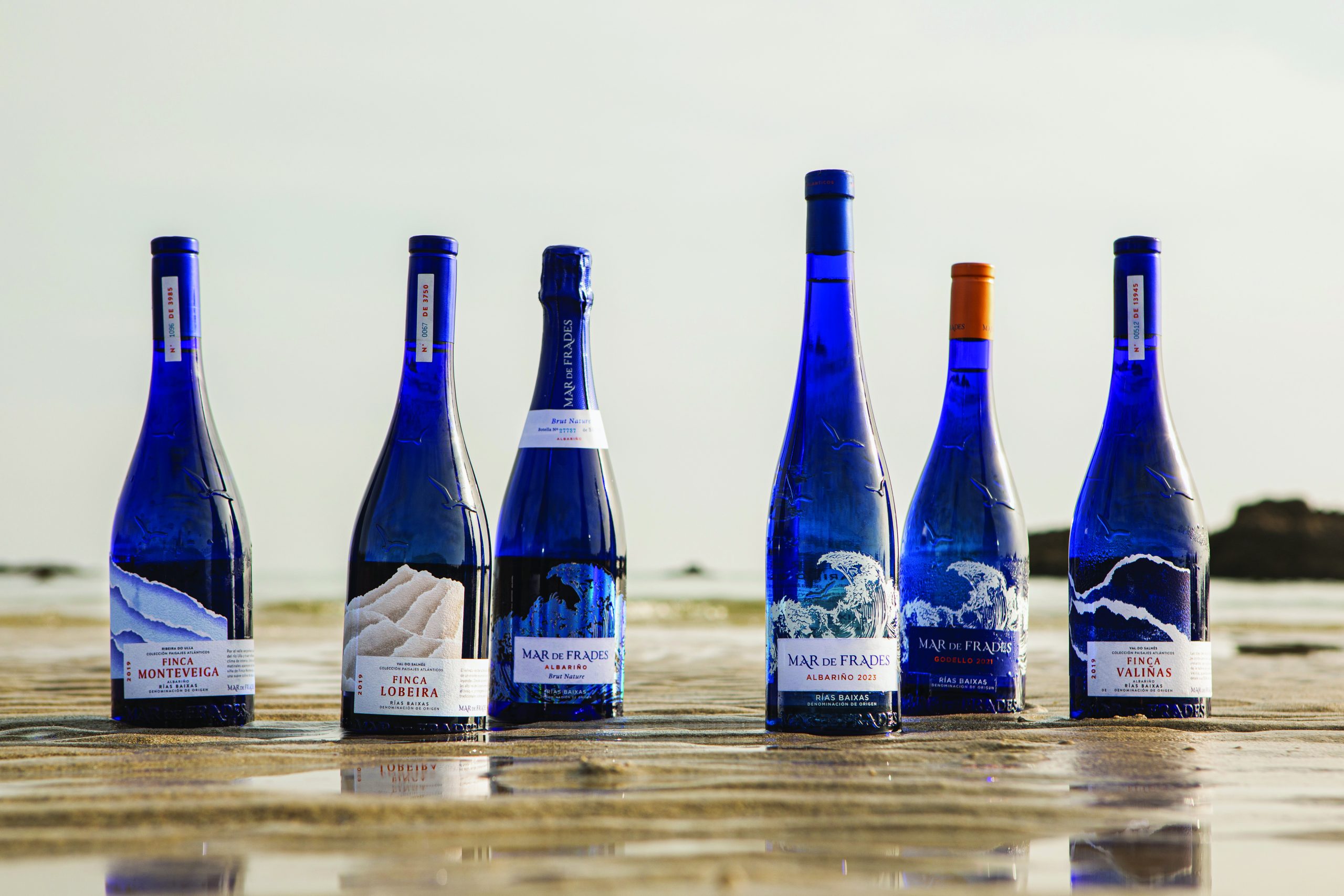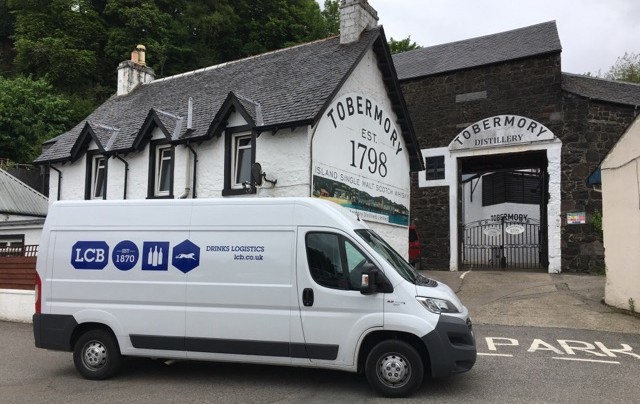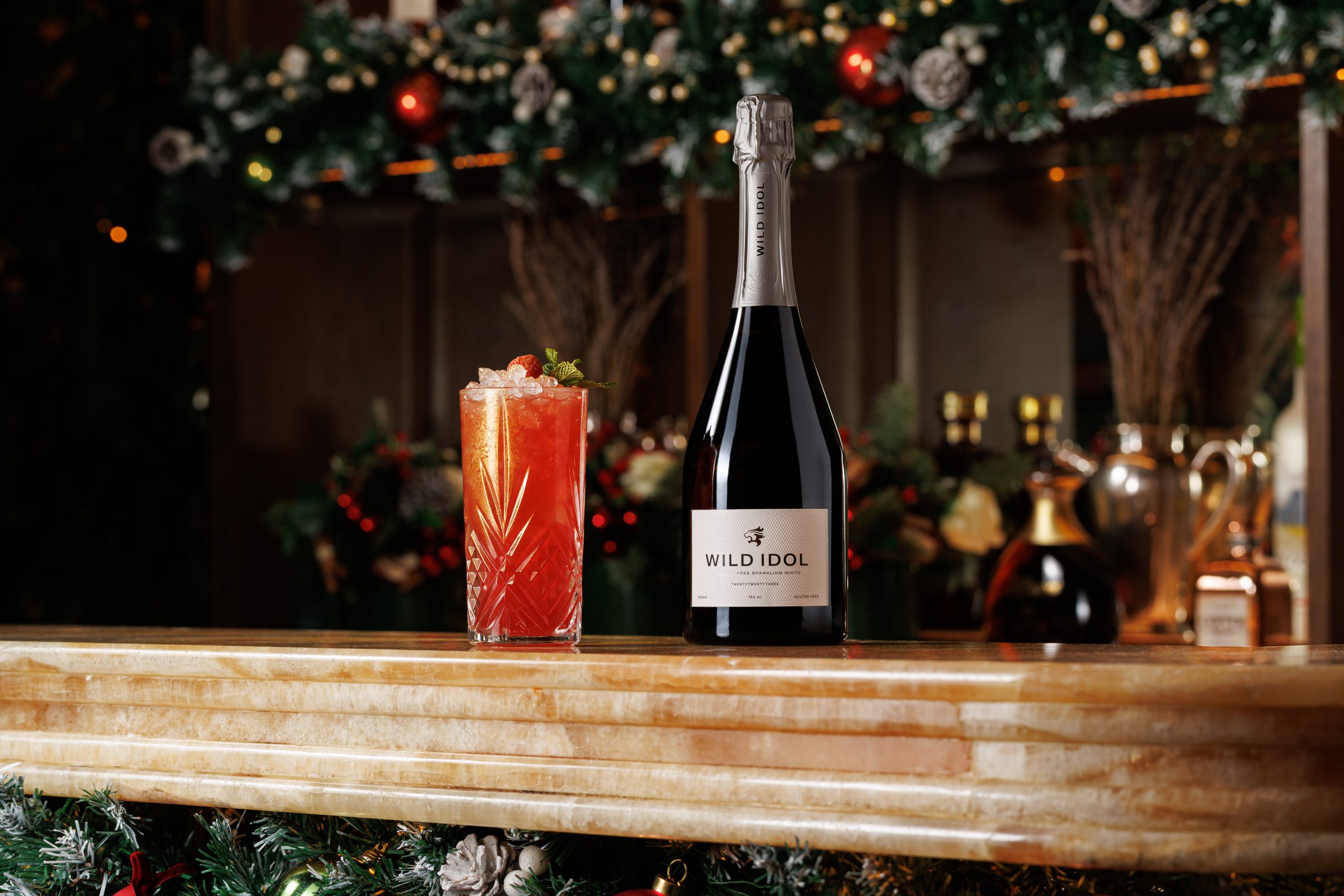The rise and rise of rosé
Producers worldwide have waded into the popular market for rosé, squeezing the entry level. As a result, Provençal winemakers are raising the quality, and prices, of their pinks in a bid to stand out. By David Bernheim
Rosé wine has grown strongly, from 8% of total wine sales to 10% from 2002 to 2017, in a market for wine that has been otherwise flat overall. Last year, sales of rosé in the US grew by an amazing 40% according to Nielsen. The big question now is whether rosé will run out of steam. Will 2019 be the year that sales start to plateau? Andrew Stewart MW of independent importer Stewart Wines still sees rosé as a major driver of the UK wine market. He does say, however: “Pinot Grigio white is big, bigger than rosé. Pinot Grigio white, Prosecco and rosé – including Pinot Grigio blush – are the engines that pull the trade.”
Provence has led the quality rosé market. Though production has grown only slightly, exports have rocketed, almost trebling in volume over five years, with value more than quadrupling. The US has accounted for most of this increase, where it was accompanied by a decline in sales of off-dry White Zinfandel. These high-value exports energised Provence, and “Provence-style” has become the industry benchmark for rosé. So much so, that many producers have felt pressured to make their rosé paler to match the Provence style, sometimes with spectacular results.
The power of celebrity by Lucy Shaw
While Brad Pitt and Angelina Jolie were early to the rosé party with Château Miraval, and rocker Jon Bon Jovi’s Diving into Hampton Water rosé from the Languedoc has become an instant hit, the latest celebrity to get in on the action is Sex and the City’s Sarah Jessica Parker (pictured), who is due to launch a Provence rosé this year made in collaboration with NZ winery Invivo. “The rosé category is on fire, so we wanted to do a Provence rosé, as SJP loves it and it’s hugely popular worldwide. We’re talking to a few producers in the region at the moment,” says Invivo co-founder, Rob Cameron. He and his business partner, Tim Lightbourne, are no strangers to celebrity wines, having been the masterminds behind chat-show host Graham Norton’s wildly successful wine range, which includes a Marlborough rosé made from Pinot Noir that has grown to become one of the most successful New Zealand rosés in the UK.
“Graham drinks rosé and we were keen to make one for the GN range after producing our own rosé for a number of years. The first vintage, 2015, was released just as rosé was really starting to take off,” says Lightbourne, who chose to make a pale pink expression due to the popularity of the Provence style. “Rosé is now a year-round drink. We’ve seen Provence driving growth in the category through unique packaging, quality wine and being accessible globally,” Lightbourne adds. According to Olivier Souvelain, CEO of Château Gassier, the power of Provence rosé lies in the aspirational lifestyle attached to it. “We don’t sell rosé, we sell Provence. Sipping a glass of rosé transports you to a sunny terrace in Provence close to the sparkling Mediterranean Sea. We are selling the dream of the French Riviera – no other wine region is able to do this so successfully,” he says. Souvelain believes that the rosé category has been groundbreaking in its ability to engage with millennials and inspire a new generation of wine lovers. “Provence rosé’s pale pink colour is perfectly suited to social media in the digital era. The rosé category has broken with traditional wine codes and has brought wine back to life with a modern approach that appeals to millennials,” he says.
He isn’t worried about the increasing number of pale pink rosés being made all over the world. “Provence rosé is unique and can’t be replicated. The fact that other regions want to make Provence-style rosé shows how popular our wines have become. The success of Provence rosé is driving the growth of the entire rosé category,” he says.
Angelo Peretti, director of the Chiaretto and Bardolino Consortium, has pushed producers to change from dark to pale coloured chiaretto as a way of reaching new markets. Sales increased more than threefold soon after the changeover in 2014, to more than 12 million bottles. Every cloud does not have a rosé lining, however. Since the rise of rosé, outside investors have piled in to buy Provence wine estates to produce rosé – such as Sacha Lichine with Château d’Esclans, Brad Pitt and Angelina Jolie with Château Miraval, and Vranken Pommery with Château la Gourdonne – which has pushed up vineyard prices in an already popular area. In May, when LVMH announced the purchase of the Château du Galoupet domaine in Provence, it confirmed this increased importance of rosé as a wine – and of Provence rosé, with the company’s presence giving the region and the sector valuable publicity. Last year, Laurence Girard summed it up in Le Monde after Star Wars creator George Lucas bought Château Margüi in Provence: “If the rise in the price of wine makes both winemakers and négociants smile, land speculation worries the former. As in other French appellations, family farms are threatened by the appetite of investors.”
Social media is awash with photos of millennials relaxing with glasses of pale rosé, having fun, often in the sun. Instagram is sometimes credited for the US boom in rosé. “Rosé has become the Champagne of millennials”, said anthropologist Richard Delerins at the 5th International Rosé Symposium (Rencontres Internationales du Rosé) in Marseille in January. “Rosé is more than a colour: it is a mode of self-expression that captures the moments of spontaneity and inner truth that are the values of millennials,” he said.
DIFFERENT APPROACHES
But while rosé is often defined by a single colour, there is no single rosé market. Different segments have dissimilar needs. IGP Pays d’Oc splits the market into four segments: going up the range from “swimming-pool”, to “traditional”, then to “terroir-driven”. The fourth segment is “original packaging and design”. Each has its distribution channels, consumers and pricing. And each needs a different marketing approach. The emergence of gastronomic rosé may be a fifth sector. ‘Swimming pool’ rosé – the wine beloved by social media – relies on colour, simplicity and a clear brand image, with little to no information on varieties, terroir or producer. The traditional and terroir-driven segments have a wide range of styles: blends or varieties, levels of sweetness, single vineyard, oaked or unoaked; in these sectors the drive for quality is most exciting. Wines that at one time could guarantee gold medals in every competition are now competing against a growing number of quality competitors.
Provence has led the way in making paler, dry rosé, with its balance of fresh acidity and ripeness of fruit. Most are made to be drunk within a year. Considerable investment is needed in the winery, especially for cooling and temperature control – things that are essential as harvest dates start earlier – which has played a significant role in the freshness of the wines, and the gentler presses designed to give the palest of rosés. Grenache and Cinsault continue to dominate the blend, with support from Mourvèdre, Syrah and Cabernet Sauvignon.
Tom Ashworth, CEO of UK merchant Yapp Brothers, has seen “a huge rise in requests for pale-coloured rosé”, much of which “has been marketing-led – Miraval, M de Minuty, Whispering Angel – rather than taste-based. There’s considerable consumer misunderstanding with regards to the correlation between colour, ABV and sucrosity. The wines above have helped to push the price that consumers are prepared to pay for good rosé. Rosé is no longer viewed as cheap quaffing wine.” However, most rosés do not breach a glass ceiling of £20-£25 a bottle.
Partner Content
Provence’s biggest competitor is the Languedoc, where IGP Pays d’Oc alone sells 25% more rosé than Provence – and makes 23% of French rosé. Whereas Provence AOP rosés are by definition blends, over 90% of IGP Pays d’Oc rosés are single-varietals, largely of the classic Provence varieties: Grenache, Cinsault and Syrah. The areas climate and terroir are not very different, but Provence has the edge on reputation and quality, with much longer experience in making rosés. Yield in Provence is capped at 55 hectolitres per hectare, compared with 80 hl/ha for IGP Pays d’Oc. Rosés from the Languedoc typically sell for less. In a vicious circle, many Languedoc producers complain that, as they cannot command sufficiently high prices, they make rosé targeted for lower price points.
To oak or not to oak?
While Château d’Esclans has won the respect of wine critics with its top Provence rosé, Garrus, which spends 10 months in oak and retails for £90 a bottle, François Matton, co-founder of Château Minuty, believes oak has no place in Provence rosé. “I’m not a fan of oaked rosé and would never barrel age my rosé as I feel it goes against the philosophy of the wine. Provence rosé should be easy to enjoy, not simple but easy. With Provence rosé you want lightness, freshness and elegance, you don’t want tannins from the wood. When it comes to rosé, most of the work should be done in the vineyard not the winery. Provence rosé is at its best when drunk within a year, so there is no need for oak,” he says.
Keen to move the Provence rosé category into the prestige Champagne sphere, a few years ago Matton developed a top rosé made predominantly from 25-year-old Grenache wines using a clone unique to the estate. “I wanted a luxury bottle to go with it so I approached perfume bottle designer Hubert de Malherbe, who is best known for creating Dior’s J’adore perfume bottle. We called the wine 281 after the Pantone number of the royal blue colour that drips down the left hand side of the bottle. Rosé is usually drunk from an ice bucket, so it was important to make sure the neck of the bottle made a visual impact from a distance,” Matton says.
DIFFERENT STYLES
Other French rosés are different in style. The Loire makes large quantities, but these have traditional markets in northern Europe and have not hit the headlines. Bordeaux is making big efforts to develop its pale rosé sales, at the expense of its traditional, darker ‘clairet’. The major market for French producers is domestic; France is the world’s largest rosé consumer. Other countries are exporting rosé. Shelves of UK supermarkets feature entry-level rosés from Italy, Spain, South Africa and Australia, as well as IGP d’Oc. Spain is the biggest exporter of rosé, shipping mainly in bulk to France, the largest importer. While Bobal is talked about as a potential rival to Grenache for rosé, production in the grape’s main area, Utiel-Requena in Spain, is small, at 2.5m bottles, and not currently a threat. As Philippe Brel, CEO of large Provence co-operative Estandon Vignerons, says: “Provence rosés are being squeezed out of the entry-level – where they had a presence 20 years ago – because of their cost.” With such fierce competition, moving upmarket is a key objective for Provence producers. Aside from working on improving the quality of the wine itself, they are also working on the image.
Packaging has become a key element of marketing, alongside communication to suit each brand. An especially wide variety of bottle shapes is now used, sometimes one for each range. This costs more but helps build brand identity. A perfect example is The Wonderful Company’s JNSQ – standing for Je ne sais quoi, which launched this Valentine’s Day. Targeted at women, its packaging was inspired by luxury perfume bottles, flaunting the beautiful pink wine inside. A carefully crafted marketing campaign backed the launch. Château de Berne’s distinctive square bottle is instantly identifiable; so much so, the house has copyrighted the design. The Syndicat de Côtes de Provence has just embraced a strategy of “premiumisation”, aiming “to be the best in all aspects of the product, such as quality, image and environment”. Jean-Jacques Bréban, president of the Provence Wine Council, and head of négociant Les Vins Bréban, sees an opportunity “to develop the idea of ‘premium’ rosés towards ‘gastronomic’ ones that suit food and which last for two or three years.”
In top restaurants, rosés hardly feature on wine lists. The more upmarket the restaurant, the less the presence of rosé. Several producers have responded to this by developing gastronomic wines with greater complexity and aging potential. Examples from Provence are Garrus and Les Clans from Château d’Esclans, and Elevae from Château Gassier; and from the Languedoc – La Villa from Château la Sauvageonne. All retail at over £45.
NOT JUST FOR APÉRITIFS
For Olivier Souvelain, CEO of Château Gassier, “gastronomic, oak-aged wines are a way of differentiating ourselves from others”, with a need “to convince consumers that rosé is not just for apéritifs”. A key part of his strategy is to develop sales by working with sommeliers. Souvelain values old vintages and uses vertical tastings of the estate’s 946 rosé “to prove our savoir-faire”. Victoria Roberts, general manager and sommelier of York restaurant Le Cochon Aveugle, wants “to see more importers and suppliers offering complex rosé wines, which in turn will encourage sommeliers and restaurants to add and recommend the wines too”. This “would open up wine lists to have some more interesting options, at various price points, not just a token bottle tagged on the end of the list,” she says. Perhaps importers need to seek innovative rosés, and, like Gassier, to educate their customers.
Provence producers are hoping for good weather in 2019, after a cool, damp May, and three troublesome vintages. Hot summers are also good for rosé sales. As Ashton says, “We sell rosé all year round these days, but when the sun shines it increases demand significantly.”
This article first appeared in the June edition of the drinks business.




